All India Coordinated Research Project on Oilseeds (Linseed & Mustard), Akola
| About Project |  |
||
| Mandate | |||
| Scientists | |||
| Research Activities and Achievements | |||
| Contact Information |
About Project
The AICRP on linseed and sesame was established at main campus of Dr. Panjabrao Deshmukh Krishi Vidyapeeth, Akola in April 1985. Subsequently this project was shifted to College of Agriculture, Nagpur from 1987 and AICRP on Rapeseed Mustard in June 2009. Variety NL 97 and PKV Nl 260 was relased in 1999 and 2009 respectively, by AICRP on Linseed, College of Agriculture Nagpur, Dr. Panjabarao Deshmukh Krishi Vidyappeth, Akola.
India contributes about 10.81 % and 5.30% to world area and production respectively for Linseed. In India linseed occupies an area of 201.21 (‘000 ha) ha yielding 659 kg per ha with an average production of 132.25 (‘000 tonnes (2021-22). The major linseed growing states of country are Madhya Pradesh, Chattisgarh, Uttar Pradesh, Maharashtra, Bihar, Jharkhand, Karnataka, Nagaland and Assam accounting for about 97 % of total area of nation. In Maharashtra it occupies an area of 56.10 (00 ha) ha yielding 267.23 kg ha-1 with an average productivity of 14.99 tone ha-1 in the Maharashtra (2020-21). Every part of the linseed plant is utilized commercially either directly or after processing. The linseed oil primarily goes to industries for manufacture of paints, varnish, oil cloth, and linoleum and pad ink. The oil cake is a good for milch cattle. The stem yields fiber of good quality having high strength and durability. The woody matter and short fibers are used as a raw pulp for making paper of quality. Linseed oil possesses a very healthy fatty acid profile, particularly, Omega-3 (Alpha Linolenic Acid), richest source only in linseed (58%). ALA provides beneficial effects in numerous clinical conditions such as, cardiovascular disease, inflammatory disorders, immune function and cancer etc.


Mandate
Linseed Breeding
- Development of high yielding varieties with high oil content for Rainfed conditions.
- Development of short duration varieties (105 days).
- Development of Linseed varieties resistance to bud fly, Alterneria blight & powdery mildew.
- Screening of Germplasm under abiotic stress.
- Maintenance, evaluation and utilization of germplasm.
Linseed Agronomy
- To study organic linseed production.
- To study the production potentials and economics of with different crops.
- Evaluation of predominant Rabi crop including linseed grown different maturity groups of paddy.
- To enhance the production level in the Rainfed conditions
Linseed Pathology
- To know the prevalence of linseed diseases occurring in the region.
- To evaluate genotypes resistant against Powdery mildew.
- To evaluate genotypes resistant against wilt under wilt sick plot.
Mustard Breeding
- Development of high yielding varieties with high oil content
- Development of short duration varieties
- Development of varieties resistant to powdery mildew and Aphids
- Development of varieties for terminal heat tolerance
Mustard Agronomy
- To find out suitable predominant rabi crop after paddy
- Suitable cropping system.
- Development of intercropping system wheat, chickpea, linseed.
- To find out suitable moisture conservation practices in Rainfed rapeseed-mustard
Research Activities and Achievements
The follwing varieties are released
- Linseed
- NL-97 (1999)
- PKV-NL-260 (2009)
2. Mustard
- ACN- 9 (2005)
- TAM 108-1 (2019)
|
Variety : NL-97
|
||
| Year of Identification | 1999 |  |
| Parent | R-7 x RLC-4 | |
| Breeding Method | Pedigree | |
| Recommended ecology | Suitable for Rabi season : Rainfed – Last week of October Irrigated – First week of November |
|
| Plant Height | 50-55 cm | |
| Varietal Character | Flower Blue color | |
| Duration | Average 105 days (115-120 days) | |
| Maturity Group | Medium | |
| Reaction of Major Pest/Diseases | Moderately resistant to Alterneria, powdery mildew and bud fly. | |
| Seed Colour | Light Brown | |
| Spacing | 30 cm row to row distance | |
| Plant Population | 7-8 lakh per hectare | |
| Fertilizer Dose | 25:25:00 NPK kg/ha | |
| Seed Rate | 12-15 kg/ha | |
| 1000 Seed Wt. | 6.89 gm. | |
| Oil Percentage | 42.1 % | |
| Average Yield | Average 900 kg/ha (800-1000 kg/ha) | |
|
Variety : PKV NL-260
|
||
| Year of Identification | 2009 |  |
| Parent | R-552 x RLC-6 | |
| Breeding Method | Pedigree | |
| Recommended ecology | Suitable for Rabi season : Rainfed – Last week of October Irrigated – First week of November |
|
| Plant Height | 45-63 cm | |
| Varietal Character | Flower Blue color | |
| Duration | Average 105 days (97-111days) | |
| Maturity Group | Medium | |
| Reaction of Major Pest/Diseases | Moderately resistant to Alterneria, powdery mildew and bud fly. | |
| Seed Colour | Light Brown | |
| Spacing | 30 cm row to row distance | |
| Plant Population | 7-8 lakh per hectare | |
| Fertilizer Dose | 25:25:00 NPK kg/ha | |
| Seed Rate | 25 kg/ha | |
| 1000 Seed Wt. | 7.6 g | |
| Oil Percentage | 37.67 % | |
| Average Yield | Average 963 kg/ha (900-1800 kg/ha) | |
|
Variety : ACN -9
|
||
| Year of Identification | 2005 | 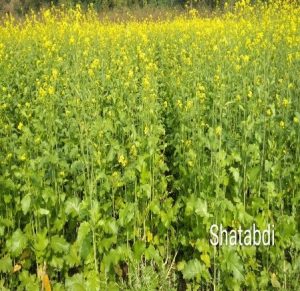 |
| Parent | Seeta x RW – 351 | |
| Breeding Method | Pedigree | |
| Recommended ecology | Suitable for Rabi season : Rainfed – Last week of October Irrigated – First week of November |
|
| Plant Height | 129 cm | |
| Varietal Character | Flower yellow color | |
| Duration | Average 98 days (95-105 days) | |
| Maturity Group | Early | |
| Seed Colour | Light Brown | |
| Spacing | 45 cm row to row distance x 10 cm plant to plant | |
| Plant Population | 1.5-2.2 lakh per hectare | |
| Fertilizer Dose | 50:40:00 NPK kg/ha | |
| Seed Rate | 4-5 kg/ha | |
| 1000 Seed Wt. | 2.9-3.8 gm | |
| Oil Percentage | 32-40 % | |
| Average Yield | Average 900 kg/ha (800-1000kg/ha) | |
|
Variety : TAM-108-1
|
||
| Year of Identification | 2019 |  |
| Parent | TM102 x RB9901 (Geeta) | |
| Breeding Method | Pedigree | |
| Recommended ecology | Suitable for Rabi season : 15 October – 15 November |
|
| Plant Height | 150 cm | |
| Varietal Character | Flower yellow color | |
| Duration | Average 101 days (100-110 days) | |
| Reaction of Major Pest/Diseases | Moderately resistant to Aphid | |
| Maturity Group | Medium | |
| Seed Colour | Dark Brown | |
| Spacing | 45 x 10 cm | |
| Plant Population | 1.5-2.2 lakh per hectare | |
| Fertilizer Dose | 50:40:00 NPK kg/ha | |
| Seed Rate | 5 kg/ha | |
| 1000 Seed Wt. | 5 gm | |
| Oil Percentage | 38-40 % | |
| Average Yield | Average 1000 kg/ha (800-1200kg/ha) | |
Research Activities and Achievements
AICRP on Linseed-
- Under ICAR NBPGR DBT network project out 2657 germplasm evaluated at the hotspot of bud fly incidence i.e. Nagpur and Mauranipur location identified one germplasm of each under resistant category of Linum usitasimum, L bienne and L. grandiflorum.
- The Bud fly adults were collected and send for morphological characterization and NBIAR, Bangalore, genus level identification is done and species level identification is in progress. The parasitoid emerges from the field collected maggots were also send for taxonomical identification at NBIAR, Bangalore
- Wide hybridization: – Interspecific hybridization between Linum usitasimum, L bienne and L. grandiflorum. attempted
- Linseed wilt 27 isolates of Fusarium oxysporum f. sp. Lini (fol) belonging to 5 different states of India were collected and wilt sick plots were developed. Morphological studies of this isolates were done and 17 morphologically different isolates were characterized on different molecular basis and further they were sequenced and sample deposited an CBI and ascension numbers were allotted to them
- Value addition: – AICRP Center COA Nagpur has been identified as value addition center of linseed. A value-added meet of food products was done at IIOR on 7th July 2021. These value-added products were recommended as research finding committee of the university. These technologies will be transferred to farmers filed after it gets recommended in the joint Agresco
AICRP on Mustard: –
- TAM 108-1 Variety of Mustard has been released during the year 2019 and notified during the year 2021.
- Genotype ACN-237 promoted in AVT (Timely Sown) in Zone IV of AICRP trials.
- Inter specific hybridization between B. juncea and B. carinata S. alba attempted for transferring powdery mildew resistance and terminal heat tolerance, similarly back cross breeding program initiated for transferring powdery mildew resistance and terminal heat tolerance gene.
- Evaluated the quality material developed by ICAR institutes and AICRP centers for crossing and developing the single/double zero varieties for horizontal expansion of mustard crop area in nontraditional area of Maharashtra
Extension activities and Achievements
- 290 FLD’s of linseed variety PKV NL 260 were conducted on farmer’s field in all the eleven districts of vidarbha from Buldhana to Gadchiroli.
- 20 FLD’s of Linseed were conducted on farmers field in rabi 2017-18 going to unto 290 FLD’s in 2021-22
- Similarly 438 FLD’s of Mustard variety TAM-108-1 were conducted along with improved package of practices in Vidarbha region
- 388 FLD’s were conducted in RKVY Mustard project during 2021-22 results into increasing in area of mustard cultivation in Gondia, Gadchiroli, Chandrapur and Bhandara.
Research Recommendations
Recommendations passed on to the extension agencies
A. Crop Production
| 1 | In Soybean-Linseed cropping sequence, application of 75% recommended P + PSB (5 kg ha-1) as soil application to both crops is recommended for obtaining higher yields & economic returns |   |
| 2 | For obtaining higher productivity & profitability it is recommended to grow Linseed variety (PKV NL-260) as sole crop or as intercrop in Chickpea + Linseed (4:2) intercropping system. |  |
| 3 | In Soybean-Linseed double cropping system, to maintain soil health through integrated nutrient management as well as to get more and at par yield and economic return with that of 100% RDF application of 75% recommended dose of fertilizer to both the crops (i.e. 23:56 and 45:23 kg N:P ha-1 to Soybean and Linseed crop respectively) along with seed inoculation with Bio-fertilizer Rhizobium (25 g/kg seed)to Soybean and Azotobactor (25 g/kg seed) to Linseed and PSB (20 g/kg seed) to both the crops is recommended. |   |
| 4 | In Utera linseed, for getting more yield and economic returns, it is recommended to irrigate it twice at 25-30 day interval after paddy harvest along with application of 100% RDN (80 kg ha-1) in two splits (40 kg N each at 10 DAS and 40 DAS) + Seed inoculation with PSB & Azotobacter | 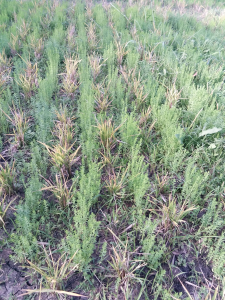 |
| 5 | In Zinc and boron deficient soils for obtaining higher seed yield at economic returns of linseed crop along with recommended dose of fertilizer 60:30:00 NPK per ha foliar application of zinc sulphate @ 0.5 % (5g per lit of water) + borax @ 0.3 % (3g/ lit of water) at 45 DAS is recommended. |  |
| 6 | Foliar application of 75 ppm Salicylic acid at vegetative and reproductive stage is found effective in enhancing productivity and profitability of Linseed. | 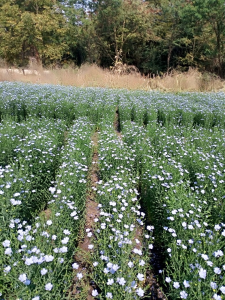 |
| 7 | In Linseed crop, for effective weed management, higher seed yield and economic returns, application of post emergence herbicide Clodinafop + Metsulfuron methyl @ 0.06 + 0.004 Kg a.i./ha (400g/ha) at 2-3 leaf stage of weed (20-25 DAS) is found better. |  |
| 8 | In linseed crop, for maintaining optimum plant population, growth and higher productivity in irrigated condition, seed rate of 15 kg/ha is recommended after harvest of paddy, sowing of linseed with zero tillage method instead of broadcasting is recommended. |  |
Mustard Agronomy
| 1 | Intercropping of wheat + mustard (9:1) proved more remunerative than their sole crops. | 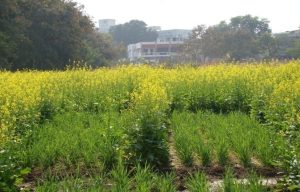 |
| 2 | For effective weed control, more yield and more economic return in mustard, 2 weeding and 2 hoeing at 20 and 40 DAS or pre-emergence application of herbicide Oxadiargyl (80 WP) @ 90. g a.i. ha-1 or Pendimethalin (30 EC) @ 1.0 kg a.i. ha-1 is recommended. |  |
| 3 | For more production and financial returns of dry-land mustard, 1 percent urea should be sprayed at 50 percent flowering stage along with the recommended dose of fertilizer. |  |
| 4 | For more yield and higher economic returns of irrigated mustard, irrigation at 0.8 IW/CPE ratio (with 50 mm irrigation depth, irrigation at 20,40 and 55 DAS) is recommended |  |
| 5 | For more yield and higher economic returns of irrigated mustard GM-3, sowing in the second fortnight of October (from 15 to 25 October) at 45 x 15 cm geometry is recommended | 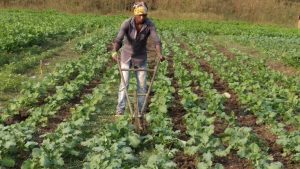 |
| 6 | For higher yield of mustrd and economic returns spraying of salysilic acid @ 200 ppm (2 gm in 10 lit of water) at flowering and siliqua formation stage is recommonded |  |
B. Plant Protection (Plant Pathology/ Entomology)
| 1. | The economic threshold level of 8.77 per cent bud fly infestation is recommended for the management of linseed bud fly | 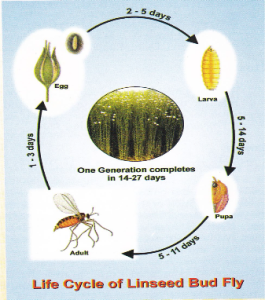 |
| 2 | Two fortnightly sprays of Azadirachtin 300 ppm @ 5 ml/lit or Acetamiprid 20 SP @ 0.004% (0.2 g/lit) or Imidacloprid 17.8 SL @ 0.0045% (0.2 ml/lit) starting from bud initiation is recommended for the effective management of linseed bud fly |  |
| 3 | For control of powdery mildew of linseed two sprays of Propiconazole (0.1%) or Difenconazole (0.05%) or wettable sulphur (0.25 %) or Quintal (0.1 %) or Hexaconazole (0.1%) one at disease initiation and second 15 days later is recommended. | 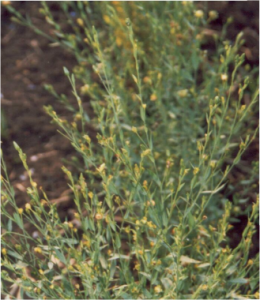 |
| 4 | Intercropping of linseed + Chickpea at 4:2 row proportion is recommended for more linseed equivalent yield (LEY) and higher economic returns by minimizing bud fly infestation |  |
| 5 | For higher seed yield, effective management of powdery mildew disease, and high ICBR (6.82), foliar spray of hexaconazole (0.1%) or seed treatment with salicylic acid at 50 ppm + foliar spray of salicylic acid at 50 ppm at 30 and 45 DAS recommended |  |
C. Linseed Value Addition
| 1 | Development of Linseed dry fruits bites- Dr. PDKV developed process technology for the production of linseed oats shots prepared with 60 % linseed, 12 % Cashew nut, 12% almond, 12 % dry dates powder and 4 % raisins having a shelf life of 50 days, packed in glass container at ambient temperature is recommended |  |
| 2 | Development of shots with linseed and oats- Dr. PDKV developed process technology for the production of linseed oats shots prepared with 50 % linseed, 35 % dates and 15 % oats having a shelf life of 50 days, packed in glass container at ambient temperature is recommended. |  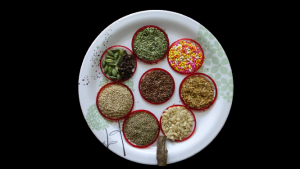 |
| 3 | Development of Linseed Mukhwas- Dr. PDKV developed process technology for the production of linseed oats shots prepared with 60 % linseed, 10 % fennel, 8 % carom seeds, 6 % sesame seeds, 4 % split coriander seeds, 7 % watermelon seeds, 3 % licorice, 2 % clove having a shelf life of 50 days, packed in glass container at ambient temperature is recommended | 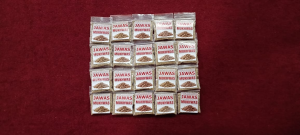 |
Project Implemented
Collaborative Projects
| Sr. No. | Project | Year | Name of Institute | Amt. (Rs in lakh) | Funding Agency |
| 1 | Sustainable Rural Livelihood Security in Backward district of Maharashtra – Linseed intervention. Investigator:Dr.P.B. Ghorpade |
2007-2014 | BAIF, Pune Dr. PDKV., Akola MPKV, Rahuri BVU, Pune HSS, KVK, Nandurbar |
2500 | ICAR-NAIP |
| 2 | A value chain on Linseed: Seed Production, Processing and Value addition for profitability. Investigator:Dr. P.B. Ghorpade |
2009-2014 | BAIF, Pune Dr. PDKV., Akola BVU, Pune |
400 | ICAR-NAIP |
| 3 | Towards Genetic Improvement of Fax for oil and agronomic traits Investigator:Dr. P.B. Ghorpade |
2009-2013 | NCL, Pune IRSHA, Pune Dr. PDKV., Akola |
200 | Canada/DBT |
4. BRNS Mustard: – Development of Powdery mildew resistant, early maturing and high yielding genotypes of mustard 2015 to 2018. (23.35 lakh)
Principal Investigator : Dr. Beena Nair
Co- Principal Investigator : Prof. R.T. Gohokar
5. ICAR NBPGR-DBT Network project: – Research network Project on leveraging genetic resource for accelerated genetic improvement of linseed using comprehensive genomics and phenotypic approaches. (Genetic improvement of linseed for bud fly tolerance). (100.58 lakh)
P I Dr. Beena Nair, Co-P I Dr. S.R. Kamdi,
Dr. J.R. Katore and Dr. V.K. Biradar
6. Adoption of high yielding varieties of mustard along with low cost production Technology in four Districts of Nagpur Divtion (33 lakh)
Name of Principal investigator 1. Dr Sandeep R. Kamdi
Co – Principal investigator 2. Dr Beena M. Nair
3 Dr. Harresh Ruprao Savai
4. Dr. Sandeep S. Karhale
5 Dr. Vinod Nagdevte
6. Dr. Narendra S. Dedhmukh
7. Dr. Neelesh Vazire
8. Dr. J. R. Katore.
Contact Information
Linseed Breeder
All India Coordinated Research Project on Linseed and Mustard
College of Agriculture
Nagpur – 440001 (Maharashtra)
Phone & Fax: (Off.) – 0712-2541245
E-mail: aicrplinseed@pdkv.ac.in






 Krishikosh Repository
Krishikosh Repository



